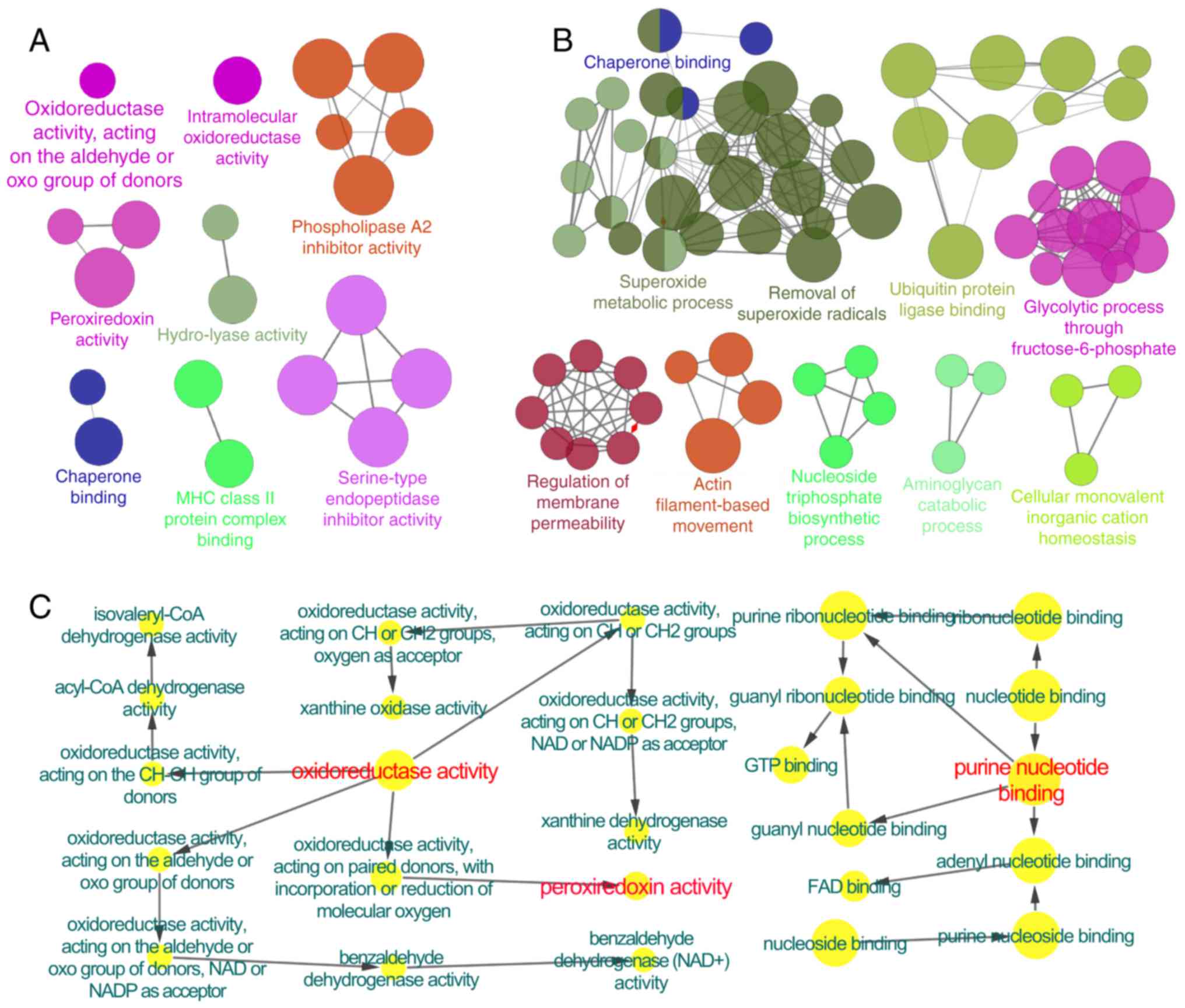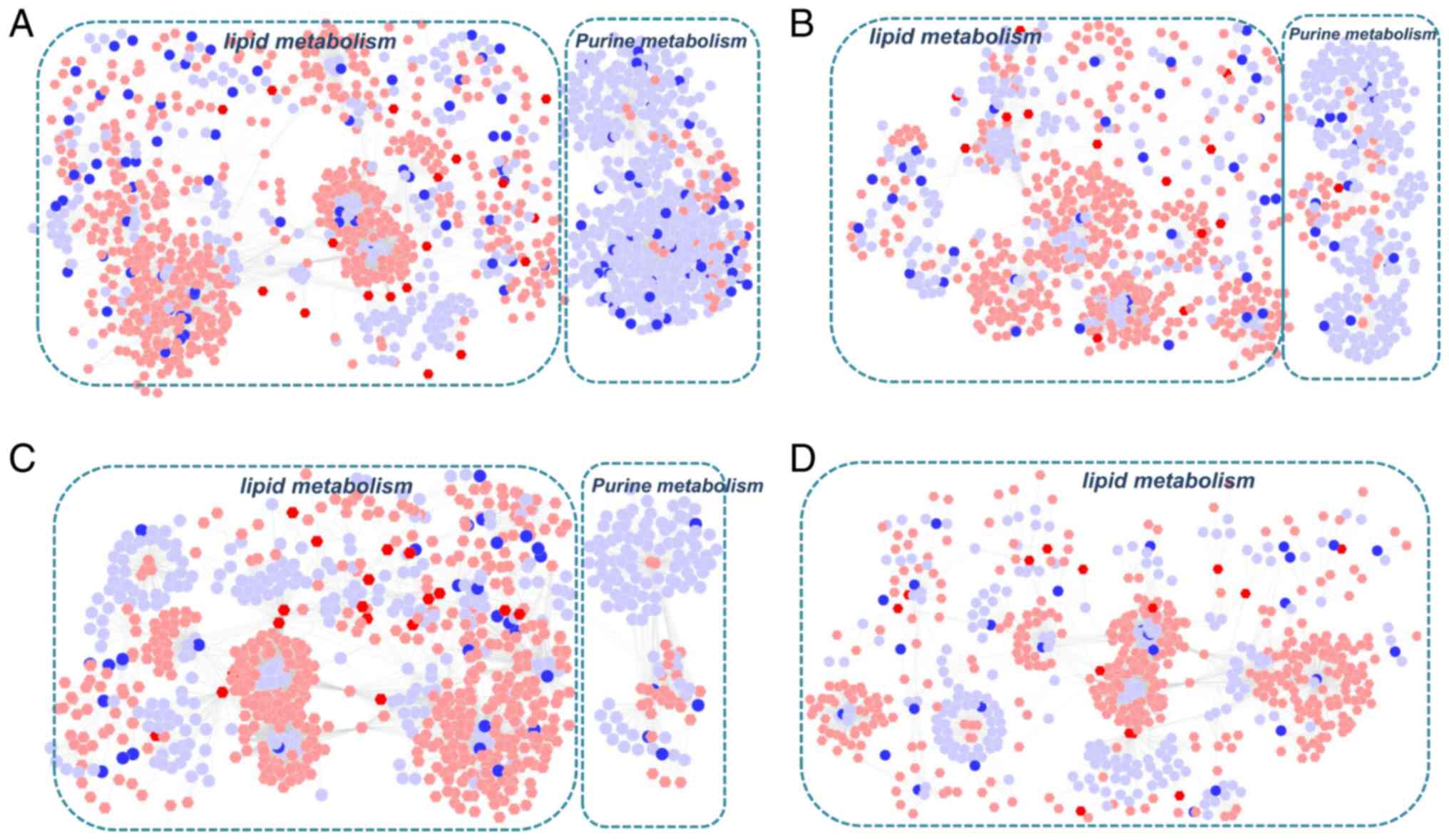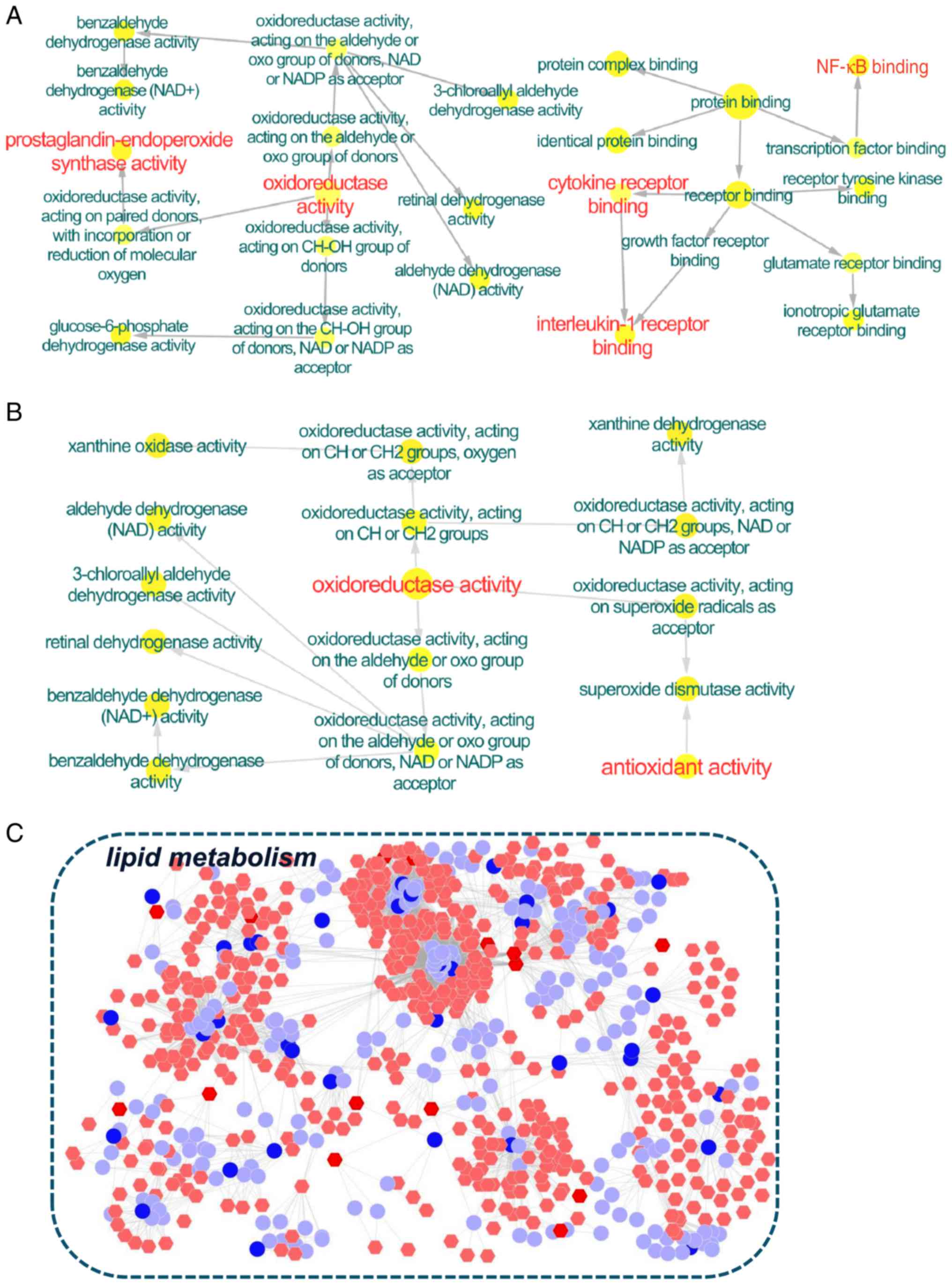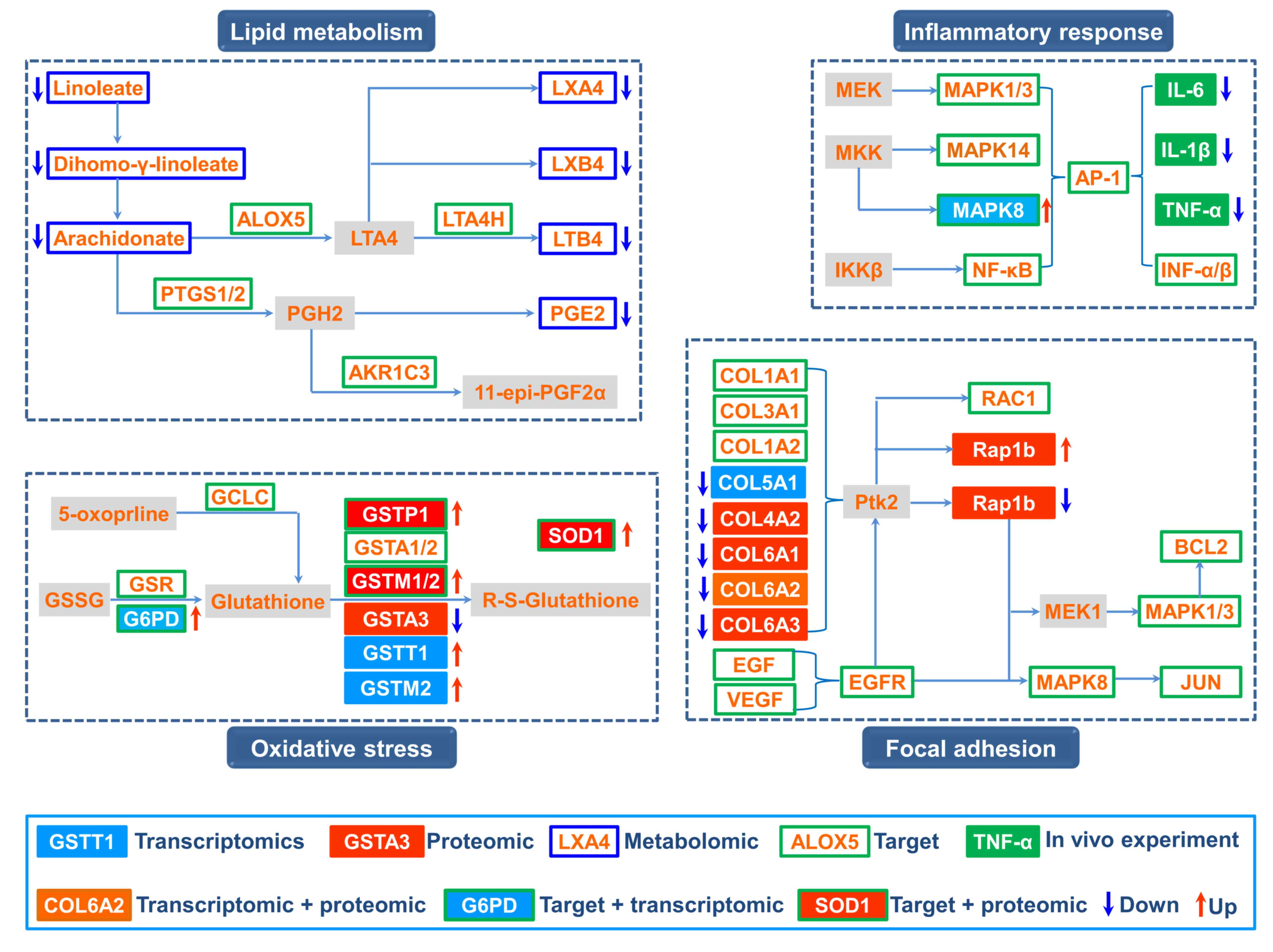|
1
|
Vestbo J, Hurd SS, Agustí AG, Jones PW,
Vogelmeier C, Anzueto A, Barnes PJ, Fabbri LM, Martinez FJ,
Nishimura M, et al: Global strategy for the diagnosis, management,
and prevention of chronic obstructive pulmonary disease GOLD
executive summary. Am J Respir Crit Care Med. 187:347–365. 2013.
View Article : Google Scholar : PubMed/NCBI
|
|
2
|
Beran D, Zar HJ, Perrin C, Menezes AM and
Burney P; Forum of International Respiratory Societies working
group collaboration, : Burden of asthma and chronic obstructive
pulmonary disease and access to essential medicines in low-income
and middle-income countries. Lancet Resp Med. 3:159–170. 2015.
View Article : Google Scholar
|
|
3
|
Gan WQ, Man SF, Senthilselvan A and Sin
DD: Association between chronic obstructive pulmonary disease and
systemic inflammation: A systematic review and a meta-analysis.
Thorax. 59:574–580. 2004. View Article : Google Scholar : PubMed/NCBI
|
|
4
|
Li SY, Li JS, Wang MH, Xie Y, Yu XQ, Sun
ZK, Ma LJ, Zhang W, Zhang HL, Cao F and Pan YC: Effects of
comprehensive therapy based on traditional Chinese medicine
patterns in stable chronic obstructive pulmonary disease: A
four-center, open-label, randomized, controlled study. BMC
Complement Altern Med. 12:1972012. View Article : Google Scholar : PubMed/NCBI
|
|
5
|
Li J, Zhao P, Li Y, Tian Y and Wang Y:
Systems pharmacology-based dissection of mechanisms of Chinese
medicinal formula Bufei Yishen as an effective treatment for
chronic obstructive pulmonary disease. Sci Rep. 5:152902015.
View Article : Google Scholar : PubMed/NCBI
|
|
6
|
Su G, Burant CF, Beecher CW, Athey BD and
Meng F: Integrated metabolome and transcriptome analysis of the
NCI60 dataset. BMC Bioinformatics. 12 Suppl 1:S362011. View Article : Google Scholar : PubMed/NCBI
|
|
7
|
Vogel C and Marcotte EM: Insights into the
regulation of protein abundance from proteomic and transcriptomic
analyses. Nat Rev Genet. 13:227–232. 2012. View Article : Google Scholar : PubMed/NCBI
|
|
8
|
Tan KC, Ipcho SV, Trengove RD, Oliver RP
and Solomon PS: Assessing the impact of transcriptomics, proteomics
and metabolomics on fungal phytopathology. Mol Plant Pathol.
10:703–715. 2009. View Article : Google Scholar : PubMed/NCBI
|
|
9
|
Wilmes A, Limonciel A, Aschauer L, Moenks
K, Bielow C, Leonard MO, Hamon J, Carpi D, Ruzek S, Handler A, et
al: Application of integrated transcriptomic, proteomic and
metabolomic profiling for the delineation of mechanisms of drug
induced cell stress. J Proteomics. 79:180–194. 2013. View Article : Google Scholar : PubMed/NCBI
|
|
10
|
Meierhofer D, Weidner C and Sauer S:
Integrative analysis of transcriptomics, proteomics, and
metabolomics data of white adipose and liver tissue of high-fat
diet and rosiglitazone-treated insulin-resistant mice identified
pathway alterations and molecular hubs. J Proteome Res.
13:5592–5602. 2014. View Article : Google Scholar : PubMed/NCBI
|
|
11
|
Li J, Yang L, Yao Q, Li Y, Tian Y, Li S,
Jiang S, Wang Y, Li X and Guo Z: Effects and mechanism of bufei
yishen formula in a rat chronic obstructive pulmonary disease
model. Evid Based Complement Alternat Med. 2014:3819762014.
View Article : Google Scholar : PubMed/NCBI
|
|
12
|
Yang LP, Li JS, Li Y, Tian Y, Li S, Jiang
S, Wang Y and Song X: Identification of metabolites and metabolic
pathways related to treatment with Bufei Yishen formula in a Rat
COPD model using HPLC Q-TOF/MS. Evid-Based Complement Alternat Med.
2015:9567502015. View Article : Google Scholar : PubMed/NCBI
|
|
13
|
Li Y, Li SY, Li JS, Deng L, Tian YG, Jiang
SL, Wang Y and Wang YY: A rat model for stable chronic obstructive
pulmonary disease induced by cigarette smoke inhalation and
repetitive bacterial infection. Biol Pharm Bull. 35:1752–1760.
2012. View Article : Google Scholar : PubMed/NCBI
|
|
14
|
Maere S, Heymans K and Kuiper M: BiNGO: A
Cytoscape plugin to assess overrepresentation of gene ontology
categories in biological networks. Bioinformatics. 21:3448–3449.
2005. View Article : Google Scholar : PubMed/NCBI
|
|
15
|
Bindea G, Mlecnik B, Hackl H, Charoentong
P, Tosolini M, Kirilovsky A, Fridman WH, Pagès F, Trajanoski Z and
Galon J: ClueGO: A Cytoscape plug-in to decipher functionally
grouped gene ontology and pathway annotation networks.
Bioinformatics. 25:1091–1093. 2009. View Article : Google Scholar : PubMed/NCBI
|
|
16
|
Karnovsky A, Weymouth T, Hull T, Tarcea
VG, Scardoni G, Laudanna C, Sartor MA, Stringer KA, Jagadish HV,
Burant C, et al: Metscape 2 bioinformatics tool for the analysis
and visualization of metabolomics and gene expression data.
Bioinformatics. 28:373–380. 2012. View Article : Google Scholar : PubMed/NCBI
|
|
17
|
Santus P, Sola A, Carlucci P, Fumagalli F,
Di Gennaro A, Mondoni M, Carnini C, Centanni S and Sala A: Lipid
peroxidation and 5-lipoxygenase activity in chronic obstructive
pulmonary disease. Am J Respir Crit Care Med. 171:838–843. 2005.
View Article : Google Scholar : PubMed/NCBI
|
|
18
|
Tulah AS, Parker SG, Moffatt MF, Wardlaw
AJ, Connolly MJ and Sayers I: The role of ALOX5AP, LTA4H and LTB4R
polymorphisms in determining baseline lung function and COPD
susceptibility in UK smokers. BMC Med Genet. 12:1732011. View Article : Google Scholar : PubMed/NCBI
|
|
19
|
Barnes PJ: Cellular and molecular
mechanisms of chronic obstructive pulmonary disease. Clin Chest
Med. 35:71–86. 2014. View Article : Google Scholar : PubMed/NCBI
|
|
20
|
Sunnetcioglu A, Alp HH, Sertogullarindan
B, Balaharoglu R and Gunbatar H: Evaluation of oxidative damage and
antioxidant mechanisms in COPD, lung cancer, and obstructive sleep
apnea syndrome. Respir Care. 61:205–211. 2016. View Article : Google Scholar : PubMed/NCBI
|
|
21
|
Lakhdar R, Denden S, Mouhamed MH, Chalgoum
A, Leban N, Knani J, Lefranc G, Miled A, Ben Chibani J and Khelil
AH: Correlation of EPHX1, GSTP1, GSTM1, and GSTT1 genetic
polymorphisms with antioxidative stress markers in chronic
obstructive pulmonary disease. Exp Lung Res. 37:195–204. 2011.
View Article : Google Scholar : PubMed/NCBI
|
|
22
|
Escribano A, Amor M, Pastor S, Castillo S,
Sanz F, Codoñer-Franch P and Dasí F: Decreased glutathione and low
catalase activity contribute to oxidative stress in children with
α-1 antitrypsin deficiency. Thorax. 70:82–83. 2015. View Article : Google Scholar : PubMed/NCBI
|
|
23
|
Rahman I and MacNee W: Antioxidant
pharmacological therapies for COPD. Curr Opin Pharmacol.
12:256–265. 2012. View Article : Google Scholar : PubMed/NCBI
|
|
24
|
Harju T, Kaarteenaho-Wiik R, Sirvio R,
Sirviö R, Pääkkö P, Crapo JD, Oury TD, Soini Y and Kinnula VL:
Manganese superoxide dismutase is increased in the airways of
smokers' lungs. Eur Respir J. 24:765–771. 2004. View Article : Google Scholar : PubMed/NCBI
|
|
25
|
Dong X, Liu Y, Du M, Wang Q, Yu CT and Fan
X: P38 mitogen-activated protein kinase inhibition attenuates
pulmonary inflammatory response in a rat cardiopulmonary bypass
model. Eur J Cardiothorac Surg. 30:77–84. 2006. View Article : Google Scholar : PubMed/NCBI
|
|
26
|
Huang Y, Meng XM, Jiang GL, Yang YR, Liu
J, Lv XW and Li J: Studies on mitogen-activated protein kinase
signaling pathway in the alveolar macrophages of chronic bronchitis
rats. Mol Cell Biochem. 400:97–105. 2015. View Article : Google Scholar : PubMed/NCBI
|
|
27
|
Kida Y, Kobayashi M, Suzuki T, Takeshita
A, Okamatsu Y, Hanazawa S, Yasui T and Hasegawa K: Interleukin-1
stimulates cytokines, prostaglandin E2 and matrix
metalloproteinase-1 production via activation of MAPK/AP-1 and
NF-kappaB in human gingival fibroblasts. Cytokine. 29:159–168.
2005. View Article : Google Scholar : PubMed/NCBI
|













